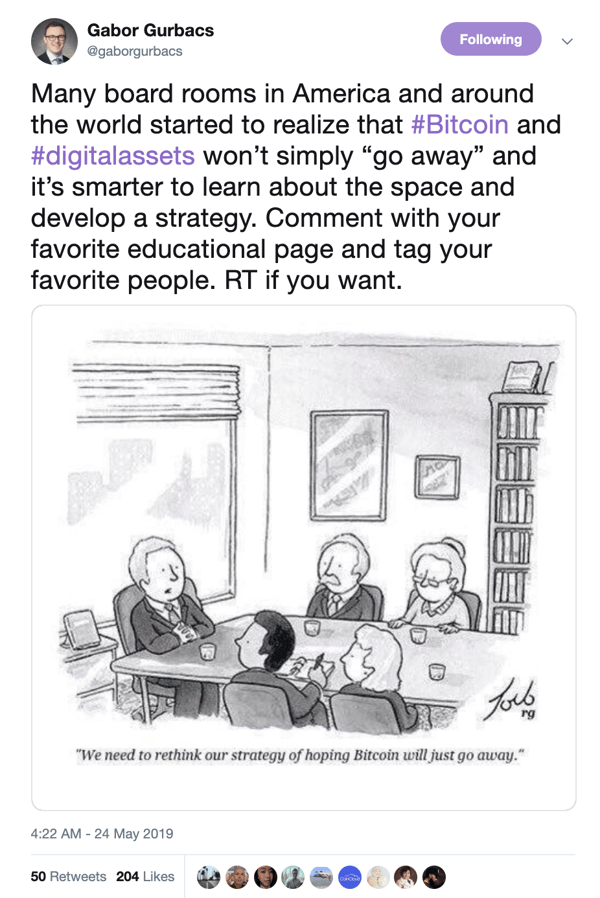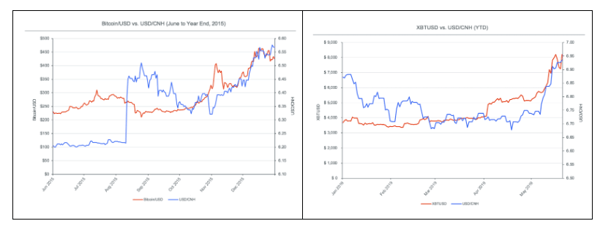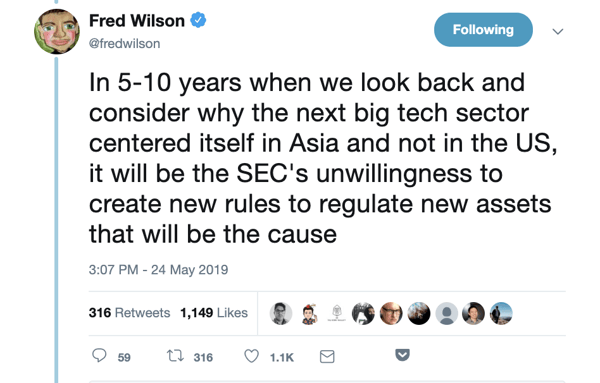.jpg)
What happened this week in the Crypto markets?
So before we get into what is happening in crypto, and why, we understand that these numbers don’t make sense to the majority of investors. Large positive returns scare investors just as much as large negative returns, because the assumption is that the risk one must take to generate these returns is too high to warrant a serious investment.
But it’s important to take a step back and remember that this asset class is tiny. Total Bitcoin wealth is under $150 billion in USD terms, and the entire digital assets industry is less than $300 billion in aggregate -- and these insignificant numbers are where we stand after a 100% rally. For comparison, Apple (AAPL) has a market cap of $823 billion. As such, the smallest of inflows into crypto, or a lack of supply, moves the needle a lot.
As investors contemplate allocating to this space (and make no mistake about it, they are ALL contemplating investments into this space), you have to ask yourself one question: Do you want to move the needle or watch it move?

1) The inflows into crypto are real. We’ve discussed the positive backdrop for months, but to save time, here is a list of incumbent companies that are now having a direct impact on inflows into digital assets:
And these behemoths aren’t just influencing investment inflows -- there is an inflow of developers and talented business professionals which is accelerating the pace of innovation. As money flows into this tiny asset class, there is a “buy the dip” mentality that seems to never manifest itself anymore because there is too much demand to generate even the smallest of dips. While few expect crypto to move higher in a straight line, the trend higher is hard to deny simply based on demand outpacing supply by a significant margin.
What are upside U.S. equity catalysts? Short of an unexpected monetary policy reversal, we see few catalysts for a continued global equity rally. Global fundamental weakness has continued to emerge with few bright spots changing the trend. U.S. data is as good as it gets and the tailwinds from tax cuts will begin to wear off in the second half. Headwinds from the trade war will persist deep into the second half of the year. - May 16, 2019Honestly, all we can say right now is ‘come on,’ why would one want to own equity risk here given a pronounced slowdown in global growth, rich valuations in the context of flat earnings growth (at best), and an unraveling of the trade narrative. - May 20, 2019We think investors ought to seriously consider the possibility that the 35-year equity bull market run, which began after the completion of the Volcker rate hikes, may be over. - May 23, 2019
This narrative by itself might not suggest a year in which equities are +10-15% and crypto is +100%. But only a fraction of investors need to pull a little bit of money out of equities or corporate bonds and deploy some of it into crypto before the dam breaks. And we’re already seeing cracks.
3) China matters a lot more than the US when it comes to crypto. For almost a decade, Kyle Bass of Hayman Capital has been ringing the alarm bells in China. His most recent note to investors details the trouble that China is facing with its own currencies. As Bass states:
Remember when Iceland, Ireland, and Cyprus fell like dominos on the front-end of the European banking crisis? The primary determinant of the sovereign’s failures in each case was the fact that each country had allowed their banking sectors to grow to almost 1,000% of GDP. A small bump in the economic road could cripple the sovereign, forcing it to intervene and save bank depositors. Hong Kong is in as precarious a situation as Iceland, Ireland, and Cyprus were leading up to the crisis. In fact, Hong Kong’s banking system is one of the most levered in the world at approximately 850% of GDP (with 280% of GDP being lent directly into mainland China).
If you are currently a saver with your savings or investments denominated in HKD, why on earth would you not convert to USD and earn an extra return while also avoiding a catastrophic currency devaluation? Investors must pay keen attention to the balances and imbalances that matter and avoid listening to “others” telling them that everything is going to be fine. One only needs to look back at major dislocations in history to learn that the architects and keepers of the sovereign have no incentive to warn investors of the risks.”
Meanwhile, Arthur Hayes of Bitmex goes even deeper into the issues in China, but instead of focusing on the USD as the safe haven, notes that BTC may actually be the safe haven of choice for many Chinese citizens:
Chinese people have no illusion about what is actually happening. Unlike their American counterparts, ordinary Chinese people do not trust the government. Americans love America. Walk around an American city, and you will see countless people wearing American flag paraphernalia. Walk around a Chinese city, and you are more likely to see a Balenciaga handbag than someone rocking the Chinese flag as a fashion statement. China has devalued and revalued the Yuan multiple times since the early 1980s. This is not lost on the population. The PBOC has kept the Yuan relatively stable since early 2017. They even made moves to actually tighten credit conditions. However, the trade war changed all that, and now they are printing money like it’s 2008. That pressure will build around the exchange rate, and at some point, either the PBOC tightens credit and slows GDP growth, or devalues. Chinese asset holders are not stupid. They see the writing on the wall, and as the CNY has recently crept higher towards the magical 7.00, Bitcoin exited the doldrums and more than doubled.

Is the market volatility associated with a recovery part of a sustainable upswing as volumes increase and news is digested? Or a sign of blatant market manipulation and a bubble? I have no idea. Regardless, I think this is great for the future of blockchain. The general excitement and good press (not to mention the profits that key industry participants are making) keeps venture capital flowing into the space, which is enabling entrepreneurs to continue working on exciting, industry-changing businesses targeting capital markets, real estate, medicine, and other sectors.
So whatever ultimately becomes of the value of BTC or ETH that someone may have in their IRA or savings account, the future continues to look great for fractionized assets, trading of, and liquidity for, private securities, and data storage/access services we can barely begin to imagine. In this regard, we are very much at the start of a transformative period of time that can only be compared to that of the internet or the industrial revolution.

Disclaimer: This commentary is provided as general information only and is in no way intended as investment advice, investment research, legal advice, tax advice, a research report, or a recommendation. Any decision to invest or take any other action with respect to any investments discussed in this commentary may involve risks not discussed, and therefore, such decisions should not be based solely on the information contained in this document. Please consult your own financial/legal/tax professional.
Statements in this communication may include forward-looking information and/or may be based on various assumptions. The forward-looking statements and other views or opinions expressed are those of the author, and are made as of the date of this publication. Actual future results or occurrences may differ significantly from those anticipated and there is no guarantee that any particular outcome will come to pass. The statements made herein are subject to change at any time. Arca disclaims any obligation to update or revise any statements or views expressed herein. Past performance is not a guarantee of future results and there can be no assurance that any future results will be realized. Some or all of the information provided herein may be or be based on statements of opinion. In addition, certain information provided herein may be based on third-party sources, which is believed to be accurate, but has not been independently verified. Arca and/or certain of its affiliates and/or clients may now, or in the future, hold a financial interest in investments that are the same as or substantially similar to the investments discussed in this commentary. No claims are made as to the profitability of such financial interests, now, in the past or in the future and Arca and/or its clients may sell such financial interests at any time. The information provided herein is not intended to be, nor should it be construed as an offer to sell or a solicitation of any offer to buy any securities, or a solicitation to provide investment advisory services.
These Stories on Market Recap